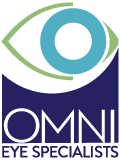OMNI Eye Specialists performs both traditional and laser cataract surgery. Our doctors and staff will discuss with you which surgical option may be best suited for your particular vision, lifestyle and activities.
Laser Cataract Refractive Surgery
OMNI Eye Specialists is proud to be one of the first Maryland practices to offer Femtosecond Laser Cataract Refractive Surgery.
Ivan H. Garcia, M.D., provides patients with this premium cataract surgery experience utilizing the advanced CATALYS® Precision Laser System.
Designed specifically for laser cataract surgery, we are very pleased to be utilizing this technology for our patients.
The CATALYS Precision Laser System is indicated for use in patients undergoing cataract surgery for removal of the crystalline lens. Intended uses in cataract surgery include anterior capsulotomy, phacofragmentation, and the creation of single plane and multi-plane arc cuts/incisions in the cornea,
each of which may be performed either individually or consecutively during the same procedures.
View Video
Key Benefits for Patients
- Customization with 3D Imaging, like a fingerprint, every eye has a unique size and shape.
- Prior to treatment, the CATALYS Laser images your eye and makes a precise 3D map of relevant structures.
- Enables your surgeon to create a tailored treatment plan that is uniquely customized for your eye.
Laser Protection
OMNI doctors can use the CATALYS Laser to create laser precise incisions, including circular opening in the lens capsule to access and remove the cataract. This precise incision helps your surgeon place the new artificial lens exactly where intended.
Many of the steps of cataract surgery that are traditionally performed using handheld instruments can now be completed using the precision of a laser. The CATALYS Precision Laser System – developed in the heart of Silicon Valley – is designed specifically for laser cataract surgery. Thousands of patients have been treated with the CATALYS Laser.
Before Your Surgery
Before your surgery, our team will discuss various types of lens implants with you. How you see after surgery will depend on the type of lens implant used. It is vital that you discuss your lifestyle and vision expectations so that we can determine the right premium lens implant for you.
During Your Surgery
Cataract surgery is relatively “patient-friendly.” It is usually performed as an outpatient procedure requiring only a few minutes. “Phacoemulsification” is the microsurgical technique used. It requires a tiny incision and breaks up the cataract with ultrasound waves.
- Eye drops are applied for anesthesia.
- The surgeon makes an incision and uses ultrasound waves to break up the hard, yellow proteins that form the cataract, leaving the lens membrane in place.
- Next, a soft, flexible synthetic Intraocular Lens (IOL) is inserted into the lens capsule of the eye.
- The lens is a permanent fixture that helps your eye to focus. You will not be able to feel or sense the implanted lens in any way.

After Your Surgery
Because there are no needles or injections, only a tiny incision, stitches and an eye patch are not required after the surgery. In most cases, the incision is so small that the eye heals rapidly, with little or no discomfort, and the patient experiences a quick visual recovery. Patients can typically return to normal activities within a few days. The following video describes some symptoms patients may experience directly after their cataract surgery.
View Video




